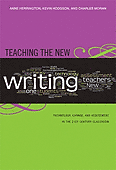A month or so ago, I was one of a handful of guests (including Suzie Boss) on Teachers Teaching Teachers, where we discussed how to tap into current events and unfolding news for learning in the classroom. While our main focus was the Voices on the Gulf site (which is up for an Edublog award for best use of a social network in education — vote for us!), the conversation was pretty wide-ranging.
Here’s the blurb:
When the Deepwater Horizon oil well exploded in the Gulf of Mexico earlier this year, teachers across the country recognized an opportunity to bring real-world applications of math and science into their classrooms. Similarly, the rescue of 33 Chilean miners has triggered student discussions about everything from heroism to human biology.
In the wake of such dramatic events, some teachers are eager to do more than host current-events-style conversations. They want to use the news as a launching pad for in-depth student learning. But making that happen requires teachers and students to dive into topics for which there are no texts or guidebooks. What’s more, maintaining student interest can be challenging once the headlines start to fade and media attention shifts to tomorrow’s hot topic.
How do you plan for academically rigorous projects that are “ripped from the headlines”? Here are a few suggestions, along with some timely resources.
Thanks again to Paul Allison and Susan Ettenheim for hosting the TTT show each week at EdTechTalk.
Peace (in the sharing),
Kevin

